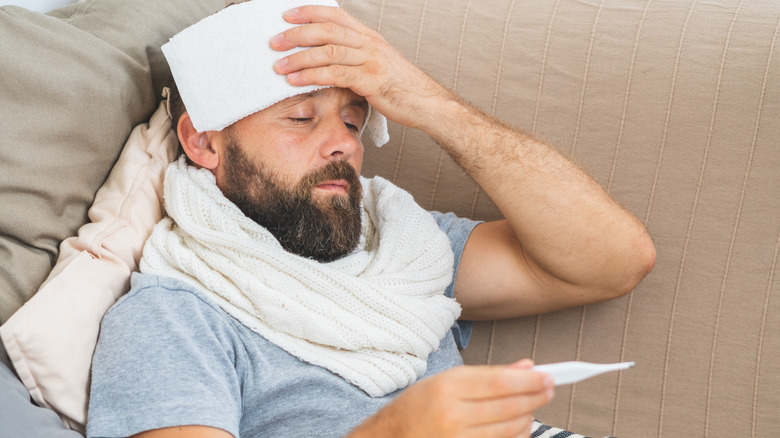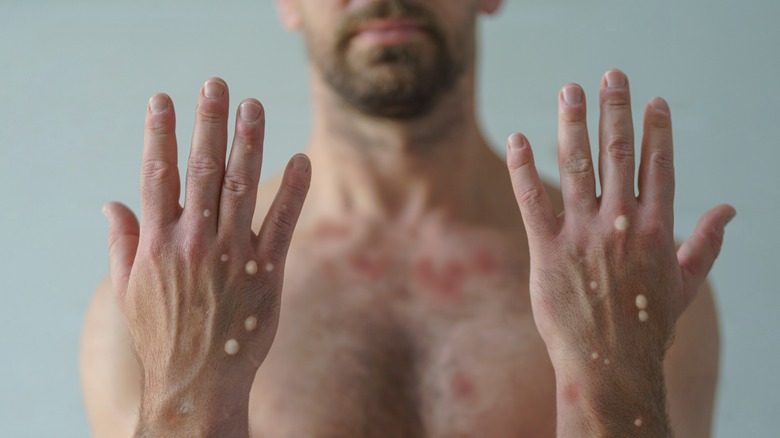How To Tell The Difference Between Monkeypox And Chickenpox
If you're over a certain age, you or someone you know probably had chickenpox as a kid, and unless you've been living under a rock, you've probably heard about monkeypox by now. While the two have similar names, they are actually not related. According to the Centers for Disease Control and Prevention (CDC), monkeypox is more closely related to the virus that causes smallpox. Monkeypox symptoms are generally milder than those of smallpox, though the infection can still cause death in some cases. Existing vaccines are effective at preventing infection (per CDC).
Chickenpox is a varicella-zoster virus (VZV) (per CDC). While highly contagious, and extremely irritating, chickenpox is rare today, thanks to the vaccine made available in the U.S. in 1995. In some cases, chickenpox can cause serious complications, including bacterial infections, pneumonia, encephalitis, hemorrhage, or sepsis. People with monkeypox can also develop pneumonia or encephalitis, but no deaths have been reported from the current outbreak of monkeypox, assures the Cleveland Clinic.
Some symptoms of chickenpox and monkeypox can appear similar, but there are apparent distinguishing factors. Here's how to tell the difference between monkeypox and chickenpox.
Symptoms and prevention
The CDC says monkeypox spreads through direct contact, which is often in the form of skin-to-skin contact, but sometimes through contact with respiratory secretions of, or objects used by, someone with the infection. It can also be contracted by being bitten or scratched by, or preparing or eating the meat of, infected animals.
Most reported cases of monkeypox in the current outbreak have been contracted through sexual contact, according to UNC Health Talk. Contagion begins as soon as symptoms appear and lasts until the rash disappears entirely and a new layer of skin has formed. Symptoms can last two to four weeks.
Chickenpox also spreads through close contact but can easily be contracted without sexual contact (via CDC). Illness typically lasts between four to seven days, according to the CDC.
People with both chickenpox and monkeypox infections develop blisters on the skin. However, monkeypox often causes swollen lymph nodes, while chickenpox typically does not, says the Cleveland Clinic.
Per the CDC, monkeypox infection can be prevented by getting a vaccine if you are at risk or have been exposed, washing your hands often, and avoiding close contact with people who have rashes that resemble monkeypox, as well as the objects they touch. Vaccines are also available to prevent chickenpox.
Prevention notes that if you believe you may have either chickenpox or monkeypox, you should call your doctor and ask about getting tested. Be sure to cover your bumps and wear a mask when visiting the doctor.


